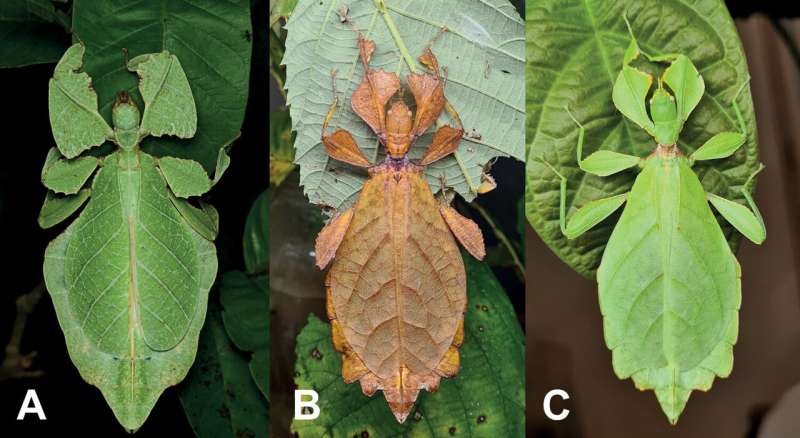Description

Disclaimer: Copyright infringement not intended.
Context
- An international research team, including the University of Göttingen, has unveiled seven previously unknown species of leaf insects, commonly known as walking leaves.
- These insects are categorized within the stick and leaf insect order, known for their astonishing mimicry of plant parts such as twigs, bark, and leaves.

Details
- "Walking leaves," also known as "leaf insects" or "phasmids," are a fascinating group of insects that have evolved remarkable adaptations to mimic leaves and twigs.
- They belong to the order Phasmatodea, which includes various species of stick insects and leaf insects.
Physical Characteristics:
- Walking leaves are known for their leaf-like appearance.
- They have flattened bodies, often resembling leaves in terms of color, shape, and even vein-like patterns.
- This incredible mimicry allows them to blend seamlessly with their surroundings and avoid predators.
Camouflage and Challenge
- These insects are renowned for their sophisticated camouflage, which provides effective protection against predators and presents a unique challenge for researchers.
- Their uncanny resemblance to plant elements makes species differentiation a complex endeavor.
Genetic Insights
- Genetic analysis has proven instrumental in uncovering "cryptic species," denoting species that cannot be differentiated solely based on external characteristics.
- This revelation holds significance for both the systematic study of leaf insects and the preservation of their diverse forms.
Taxonomy Complexity
- Taxonomy, encompassing species naming and classification, faces difficulties with leaf insects due to the intricacies of their appearance. Instances exist where distinct species share striking similarities, while variations may occur within the same species.
Geographical Origins
- The newfound species hail from various regions, including Vietnam, Borneo, Java, and the Philippines.
- Their diverse origins contribute to the richness of the insect world.
Diverse Insect Family
- Stick and leaf insects collectively comprise around 3,500 known species.
- Remarkably, there are just over a hundred described species of leaf insects.
- Despite their numerical minority, their striking and unexpected appearances set them apart.
Feeding and Diet
- Walking leaves are herbivores and primarily feed on plants.
- Their diet often consists of a variety of leaves that match their appearance, allowing them to maintain their camouflage even while feeding.
Reproduction and Life Cycle
- The life cycle of walking leaves typically involves egg-laying, followed by nymph stages.
- Nymphs resemble miniature versions of adults but may lack fully developed wings in some species.
- As they grow, they molt and shed their exoskeleton several times before reaching adulthood.
Geographical Distribution
- Walking leaves are found in various parts of the world, particularly in tropical and subtropical regions.
- They are commonly found in rainforests and other densely vegetated habitats.
Behavior and Locomotion
- Walking leaves are not only adept at mimicking leaves but also imitate the swaying motion of leaves in the wind.
- Some species can sway or rock their bodies to mimic the movement of leaves, adding to their convincing disguise.
Threats
- Their main threats include habitat destruction due to deforestation and the use of pesticides.
- Conservation efforts are important to protect their natural habitats and raise awareness about their ecological significance.

Conclusion
In conclusion, the discovery of these new leaf insect species sheds light on the intricacies of mimicry in the natural world. Genetic insights have unveiled hidden diversity within these cryptic creatures, underscoring the importance of conservation efforts to protect these unique and remarkable insects.
|
PRACTICE QUESTION
Q. Which of the following statements about walking leaves, also known as leaf insects, is true?
1. Walking leaves are known for their ability to imitate the appearance of rocks and pebbles.
2. Genetic analysis cannot be used to differentiate between different species of walking leaves.
3. Walking leaves are categorized within the stick and leaf insect order.
4. Walking leaves are primarily found in desert environments.
Options:
A. 1 and 2 only
B. 3 only
C. 2 and 4 only
D. 1 and 3 only
Answer: B
|
https://phys.org/news/2023-08-curious-cryptic-leaf-insects.html












